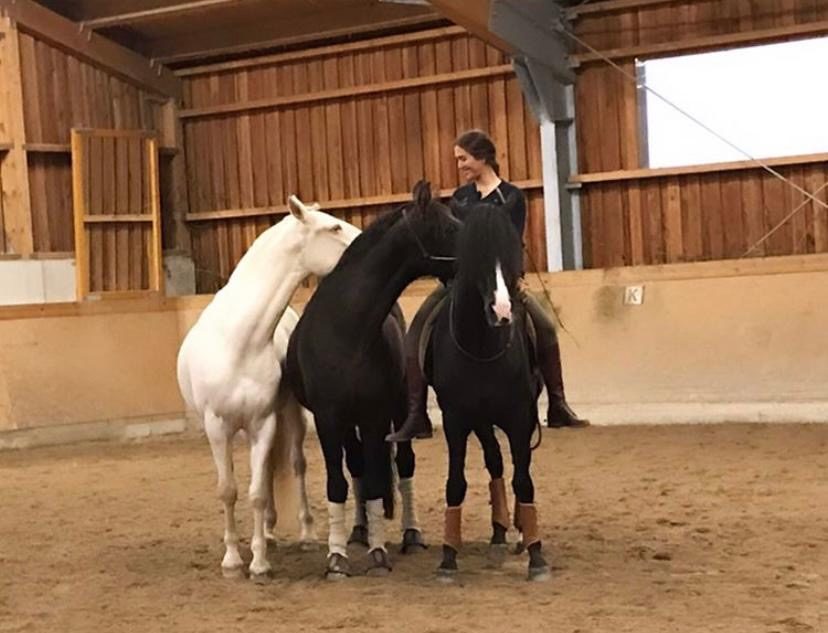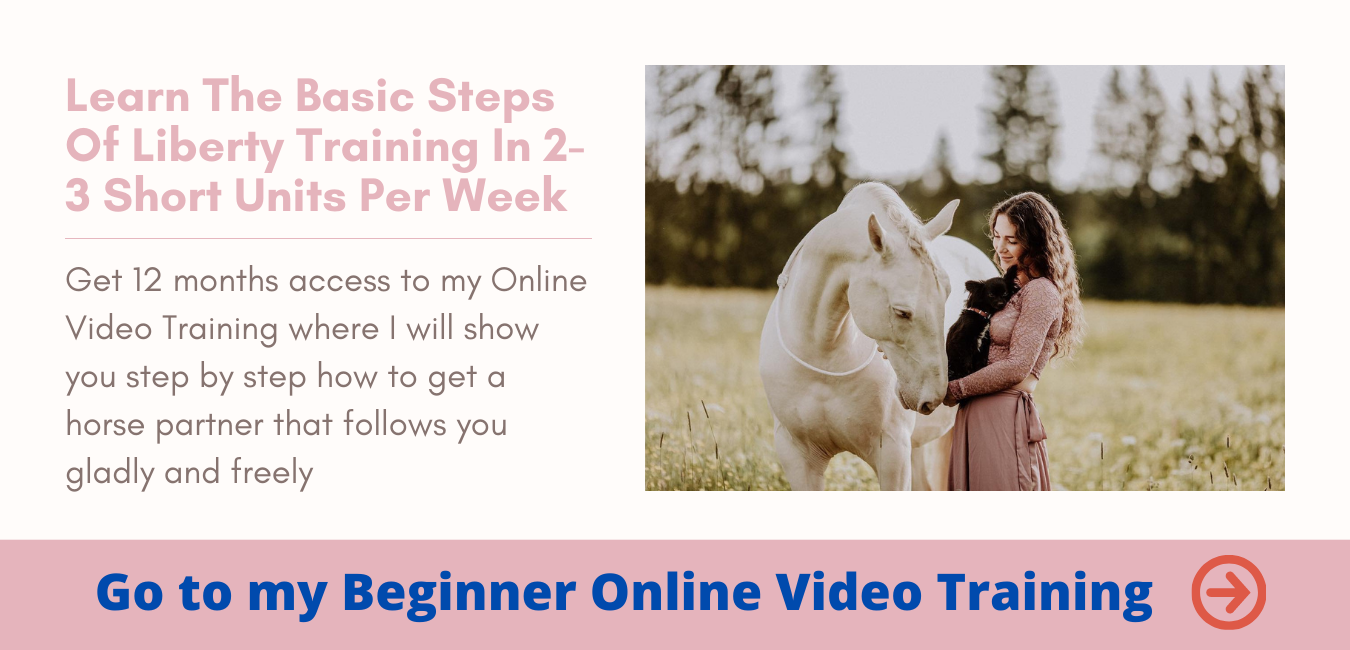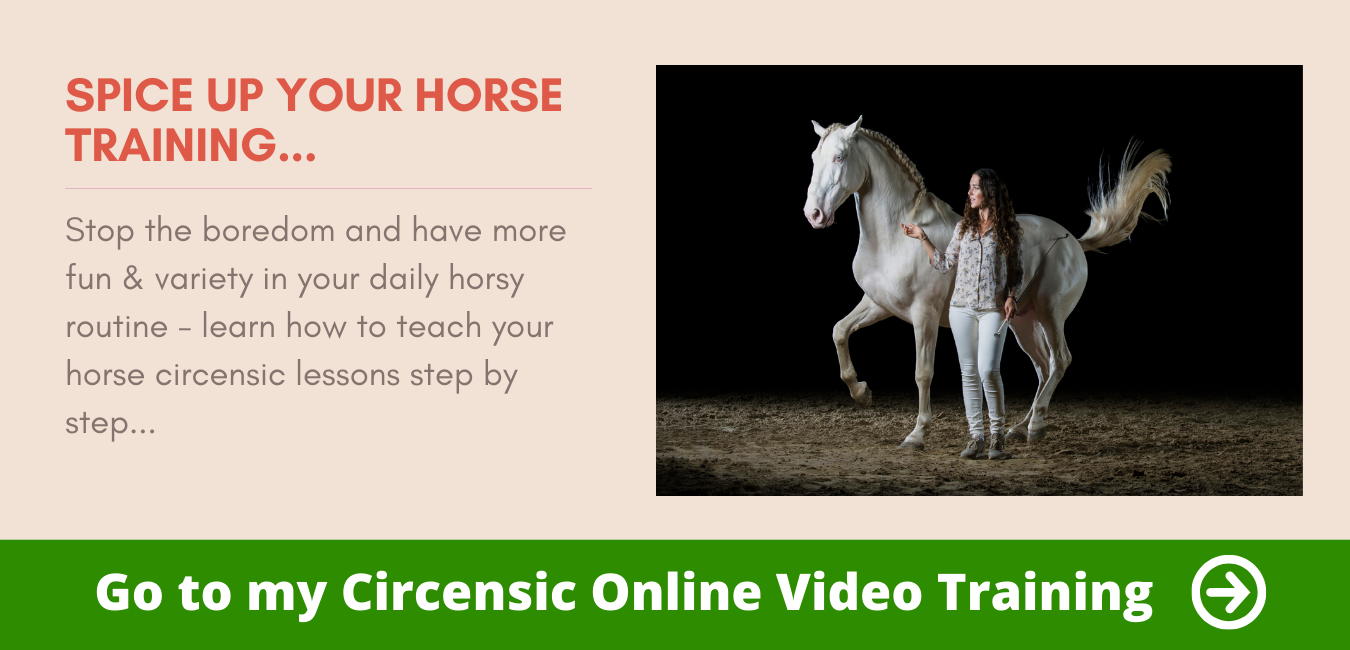Do you have more than one horse?
With more than one horse, we do not have time in our daily lives to do many individual training sessions or to always go on separate rides.
The good news is that you can train and ride with two horses at the same time!
1) Foundations are key
As we know, a strong foundation really pays off. It’s very important that both horses are well-trained in free dressage and that the horses fully embody foundational principles, including the lead exercises.
Because when you are no longer on the ground but sitting on a horse, it is even more important that your hand horse holds its position next to you – and doesn’t pull you forward or backwards from the horse you are sitting upon.
2) Make sure your horses are trained in the Comfort Position
(I always recommend the lead exercises to do during the warm-up.
Remember, the basics cannot be repeated and strengthened often enough!)
The concept of the “comfort position” can also be transferred to hand-horse riding.
Practice changing speeds with your hand horse – both at a walk and at a trot.
It doesn’t matter whether you walk fast or slow: Your horse should look for and hold the “comfort position” on its own. Only then can you go one step further and ride a horse while guiding your hand horse.
3) A note on your riding horse
For the horse that you will ride later on: You should have a lot of previous experience riding the horse safely.
Ideally, it should also be able to be ridden as independently of the reins as possible. Because you will later have the rope for the hand horse in one hand, it will be much more difficult for you to influence your riding horse while holding two separate reins.
The easiest way is to teach your horse to be ridden with one hand, because then you can influence both horses at the same time completely independently of each other.
4) To prevent quarrels, you must show up as the leader
Experience shows that you will concentrate more on your hand horse at the beginning.
You will constantly be reminding him that he should also keep his position next to you as a hand horse – no matter at what speed and without pushing or being pulled behind.
Of course, it is easiest if both horses already know each other and like each other.
But in the end, your effectiveness as their leader will be what prevents any quarrels.
This means that both horses should be aware of the fact that they can settle any ranking disputes outside of training, but not when you are present.
In fact, if you are an effective leader, theoretically two well-behaved horses that are strangers will be able to ride together.
With Fideo, for example, riding with a hand horse whom he has never met is no problem at all, even though he is a stallion.
However, it is even more important that the hand horse does not start any ranking games, but is just as concentrated as your riding horse.
5) A quick note on nose contact:
I do let the two horses make nose contact for a short time, but I keep it short and then quickly move on to training.
Many dangerous situations can be avoided in this way, because the horses’ minds are no longer occupied with the potential rival but with the task to be solved in training.
However, please do not take any risks here!
6) Using physical tools
I strongly recommend that you take a whip with you.
With the whip as an extended arm, it is easier to brake your horse forward if he starts to push, but also to drive him forward if he tends to be pulled behind.
With the reins of the riding horse as well as the rope from the hand horse and the whip, you have quite a lot in your hands, but if you manage the handling and your preparation is good, you will achieve good results quickly!
I now practise stopping, starting and stopping again with both horses – at first only on the left hand – until they walk well and smoothly next to each other and really pay attention to your signals.
Only then do I incorporate hand changes to the right hand, where the riding horse has to walk faster than the hand horse in order to maintain the “comfort position” for both of them. Many horses find this quite difficult.
Therefore, make sure that the rope of your hand horse is short enough to slow it down with small impulses.
You can also use the whip as a visual signal.
Your horse has already got to know the whip on the ground as a signal to slow down or stop and should therefore react well to it from the horse.
Observe yourself whether you manage to transfer the signals you have learned on the ground as similarly as possible to the saddle.
Of course, it is easiest if your horse already listens well to your voice commands and doesn’t need many “visual signals” to rule correctly.
7) How to Address your horses
The challenge is not to address both horses at the same time, but to be able to distinguish to whom the current signal is directed.
I put the horse’s name in front of the signal – most horses understand this quite quickly.
Nevertheless, bear with your horse at the beginning if he struggles with the many different and sometimes contradictory signals and your divided attention.
Of course, like everything else, this needs some routine first. But you can develop this way of moving two horses incredibly well!
[su_youtube url=”https://youtu.be/pPyoxt1uAgo”]
So I wish you lots of fun trying it out – and lots of joy with two horses.
By the way, most horses have a lot of fun training together in a group – maybe that’s why hand-horse riding will soon be part of your everyday life.
You can never have enough horses, can you?
All the best,
Your Kenzie




